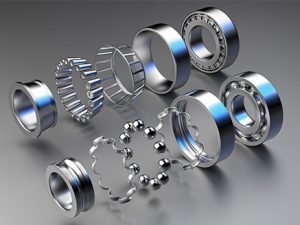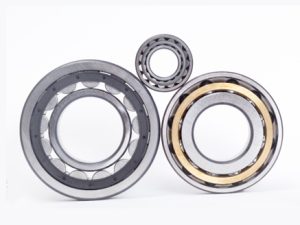Table of Contents
- Early Beginnings: The Birth of Bearings
- Industrial Revolution: Steel Bearings and the Rise of Automobiles
- Mid-20th Century: The Introduction of Sealed Bearings
- The Late 20th Century: Advancements in Material Science
- The 21st Century: The Rise of Smart Bearings and Integration with Modern Technologies
The development of hub and bearing systems has played a pivotal role in the advancement of automotive engineering. These seemingly simple components, which allow for the smooth rotation of wheels and reduce friction between moving parts, have evolved significantly over time. From early, rudimentary designs to today’s high-tech, precision-engineered systems, the history of hubs and bearings reflects broader trends in automotive technology, material science, and manufacturing techniques. This article explores the evolution of hub and bearing systems, highlighting key milestones and modern innovations that have shaped the automotive industry.
Early Beginnings: The Birth of Bearings

The history of bearings dates back thousands of years. The earliest forms of bearings were simple wooden and stone rollers used in ancient civilizations to transport heavy loads. The use of such systems in carts and wagons helped reduce friction between the axle and the wheels, making movement more efficient.
The concept of a “bearing” as we know it today began to take shape in the 19th century. Before that, wheel hubs and axles were often simply wooden pegs or iron rods placed in a central hole, with no lubrication or bearings to reduce friction. This lack of lubrication caused rapid wear, particularly in heavily used vehicles like carts and wagons.
The first real innovation came in 1794 when Philip Vaughan, a Welsh inventor, patented the design for a rolling-ball bearing. His design was a precursor to the ball bearings used in modern vehicles, where small spherical balls roll between two races, reducing friction by creating a gap between moving surfaces. This breakthrough significantly improved the longevity of wheels and axles, paving the way for more sophisticated hub and bearing systems.
Industrial Revolution: Steel Bearings and the Rise of Automobiles
With the advent of the Industrial Revolution in the late 18th and early 19th centuries, the demand for efficient, durable machinery grew exponentially. During this period, steel began to replace other materials in bearing and hub construction. The increased availability of high-quality steel allowed manufacturers to create stronger, more precise bearings and hubs capable of withstanding the stresses of industrial applications.
In 1901, an important milestone in the automotive world occurred when the first modern automobile, the Mercedes 35 HP, was built. Its design incorporated the use of ball bearings in the wheel hubs, a significant leap forward from earlier models, which often relied on simpler, less efficient friction-based axle systems. These ball bearings, made from steel, allowed for smoother, more efficient wheel rotation, reducing wear and tear on components and making vehicles more reliable and longer-lasting.
Around the same time, the design of wheel hubs evolved. Early car hubs were typically made of cast iron and were relatively large and heavy. Over time, these hubs became more compact, incorporating integrated ball or roller bearings to handle both radial and axial loads more efficiently. These design improvements allowed manufacturers to create vehicles that were not only more durable but also more efficient, as the reduction in friction meant less power was needed to maintain speed.
Mid-20th Century: The Introduction of Sealed Bearings

By the mid-20th century, the automotive industry had seen rapid advancements in both materials and manufacturing processes. One of the most important innovations during this period was the development of sealed bearings. Sealed bearings were designed to keep lubricants in and contaminants out, reducing the need for regular maintenance while improving the overall longevity of the bearing system.
The key advantage of sealed bearings was their ability to perform in harsh environments, where dust, dirt, and water could otherwise cause significant damage. In addition, sealed bearings reduced the need for external lubrication systems, such as grease fittings, which simplified maintenance and reduced the likelihood of failure due to inadequate lubrication.
The increased focus on vehicle safety and performance during this period led to the adoption of high-performance bearings in a wide variety of applications. As car manufacturers began to emphasize smoother handling, reduced noise, and better fuel efficiency, the importance of high-quality bearings in wheel hubs became clear.
The Late 20th Century: Advancements in Material Science
As technology progressed through the 1970s and 1980s, bearing and hub systems began to see even greater innovations, primarily driven by advances in material science. Traditional steel bearings were increasingly supplemented or replaced by materials such as ceramic, composites, and hybrid bearings. These materials offered significant improvements in terms of friction reduction, weight, and durability.
Ceramic Bearings
Ceramic bearings became a popular choice in high-performance automotive applications, particularly in racing and sports cars. These bearings, often made from silicon nitride or zirconium oxide, were lighter than steel bearings, and their high hardness and low coefficient of friction made them ideal for reducing wear and increasing speed. The use of ceramic bearings allowed for faster acceleration and more precise handling, while also offering greater heat resistance, making them suitable for high-performance environments.
Hybrid Bearings
Hybrid bearings, which combine steel and ceramic components, emerged as a compromise between the strength of steel and the low friction properties of ceramics. These hybrid bearings are particularly effective in reducing friction, increasing fuel efficiency, and extending the lifespan of wheel hubs.
The use of these advanced materials led to the development of lighter, stronger, and more durable wheel hub systems. By the late 1990s, wheel hubs were typically made of lightweight alloys such as aluminum, which further reduced weight and improved overall performance. These developments also laid the groundwork for the increasing integration of advanced bearing and hub technologies in electric and hybrid vehicles, where efficiency and reduced weight are crucial.
The 21st Century: The Rise of Smart Bearings and Integration with Modern Technologies
In the 21st century, the automotive industry saw a new wave of innovation in hub and bearing design, driven by advancements in digital technology, smart materials, and manufacturing processes. As vehicles became increasingly reliant on electronics, sensors, and computer systems, so too did bearing and hub systems evolve to integrate with these technologies.
Smart Bearings and IoT Integration
One of the most significant developments in recent years has been the integration of sensors and Internet of Things (IoT) technology into hub and bearing systems. Modern bearings can now be equipped with sensors that monitor key parameters such as temperature, vibration, and load in real time. This data can be transmitted to the vehicle’s onboard computer system, allowing for predictive maintenance and early detection of potential issues.
For example, if a bearing begins to show signs of excessive wear, the system can alert the driver or automatically schedule a service appointment, reducing the risk of unexpected failures and costly repairs. These “smart” bearings help improve vehicle reliability and safety while reducing downtime and maintenance costs.
3D Printing and Additive Manufacturing
Another significant innovation in the design of hub and bearing systems has been the use of 3D printing and additive manufacturing. These technologies enable the creation of more complex and lightweight designs that would be difficult or impossible to achieve with traditional manufacturing methods. Engineers can now create bespoke, optimized bearing geometries tailored to specific applications, improving both performance and durability.
3D printing also enables rapid prototyping, allowing manufacturers to test and iterate designs more quickly and cost-effectively. This flexibility accelerates innovation and allows for faster integration of new materials and designs into mass production.
Sustainability and Eco-friendly Materials
Sustainability has become a key concern in the automotive industry, and the development of more environmentally friendly bearing and hub materials is a natural extension of this trend. Manufacturers are increasingly using recyclable materials such as aluminum alloys and biodegradable polymers to reduce the environmental impact of production. Additionally, energy-efficient manufacturing techniques are being developed to minimize the carbon footprint of bearing production.
Conclusion: The Future of Hub and Bearing Systems
The evolution of hub and bearing systems has been marked by constant innovation, with each advancement improving the performance, reliability, and efficiency of automotive vehicles. From the earliest rudimentary designs to the high-tech, smart-bearing systems of today, these components have played a crucial role in shaping modern transportation.
Looking forward, the future of hub and bearing systems will likely see even greater advancements, driven by the increasing electrification and automation of vehicles. As vehicles become more connected and autonomous, the demand for high-performance, durable, and smart bearing systems will continue to grow. Innovations in materials, digital technologies, and sustainable manufacturing practices will ensure that hubs and bearings remain at the heart of the automotive industry, supporting safer, more efficient, and environmentally friendly transportation solutions.